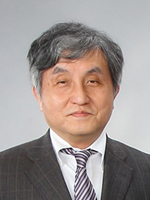Scope
Scope of Symposium
It has been almost two decades since the era of rapid progress on the terahertz (THz) technology research in the latter half of the 1990's and three years have passed since the First International Symposium on Frontiers in THz Technology (FTT 2012) was held in Nara. The research and development (R&D) on the THz technology continues to develop and diversify from the basic research areas such as sources, detectors, components, materials, spectroscopy and imaging, to the applied technologies in the areas of bio-medicine, the industry, the security, remote-sensing, and communications.
The Second International Symposium on Frontiers in THz Technology (FTT 2015) is designed to be held in order to challenge the issues of the THz technology and to invent the applications that truly contribute to the human society. It is aimed at assisting steady development of the research into the future by incorporating the scope on the results performed until now, searching for the important fields and the lodestar of the research and development, and by carefully watching the present trend including cutting-edge studies and new research seeds.
Though the cooperation of the EU countries, the United States and Japan are still expected to continuously play the key role, the research and development of the THz technology is being activated in Asian nations with the remarkable development in the economy in recent years. In this symposium, the THz research and development for raising new technological seeds is discussed in compliance with the social needs of Asian nations.
The FTT 2015 will closely collaborate with the organization of the 40th International Conference on Infrared, Millimeter, and Terahertz Waves scheduled to be held in Hong Kong in 2015.
In Memory of Professor Masanori Hangyo
 Masanori Hangyo, Chair of FTT 2012 and a pioneer in THz emission from a superconductor, ellipsometry by the THz-TDS and THz metamaterials, passed away on 25 October 2014. He was 61 years old.
Masanori Hangyo, Chair of FTT 2012 and a pioneer in THz emission from a superconductor, ellipsometry by the THz-TDS and THz metamaterials, passed away on 25 October 2014. He was 61 years old.
He graduated in physics at Kyoto University in 1976 and earned his Ph.D. degree from Kyoto University in 1981. His academic carrier took off in 1981 Osaka University where he was later promoted to Associate Professor of Institute of Laser Engineering and then to full Professor in 2004.
He was always involved in material science, measuring techniques and their applications to industry.
